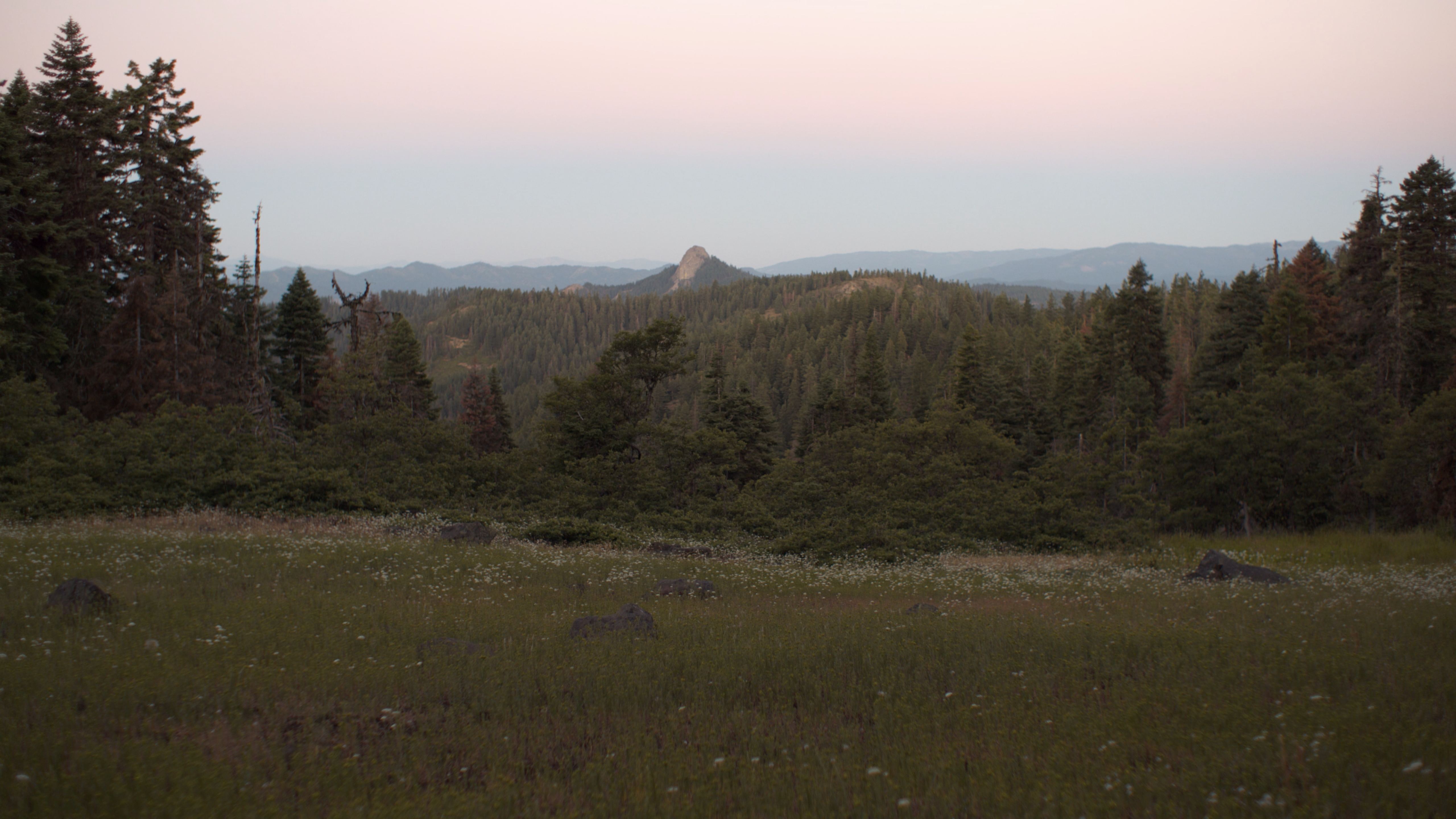
Deep Green: Cascade-Siskiyou National Monument, Jackson County, Oregon, July 20, 2019
I recorded the first recording in the New Nature series, Balsam Lake Mountain Wild Forest, Ulster County, New York, October 15, 2016, five years ago in the Catskill Mountains. I was seeking support from the Puffin Foundation to make a second video, which I was planning to shoot in the Boundary Waters of Northern Minnesota in July, 2019, with support from Hamline University’s Center for Global Environmental Education. I was then approached by Scott Malbaurn, Director of the Schneider Museum of Art in Ashland, Oregon. The Schneider commissioned the second recording, exhibited it in 2020, and will accession it into its permanent collection later this year (2021).
Location selection is an important aspect of this project. I am particularly interested in wild places that are relatively pristine, without visible or audible traces of human impact. I am drawn to views that are subtly beautiful but not spectacular or clichéd, and am interested in the history of each place, including the people who first lived there, how it was taken from them, who it now belongs to and how it is likely to change in the future. I am always thinking about how my work relates to the legacies of Western landscape painting and photography.
I record for 24 hours straight, from midnight to midnight, on a full moon (so there’s something to see at night). For Balsam Lake, I had a crew of three: myself, a cinematographer and a production assistant. For the second shoot, Deep Green, I had a crew of four: myself, a cinematographer, a field sound recordist and a production assistant.
I shot the first film in 4K on a Sony FS7 digital cinema camera with an Arri cinema lens, and recorded audio with a Core Sound ambisonic microphone. The second film was shot with a Canon C300 MKII camera, and audio was recorded with a Rode ambisonic microphone. Recording for 24 hours in a remote wilderness location presents significant challenges (data storage, battery power, crew stamina). Post-production, which includes color correction, audio mixing and rendering, also presents challenges.
The New Nature videos are meant to be exhibited using the best available video displays or projectors. Currently, this means either large 4K OLED TVs or 4K projectors with multiple speakers. Playback must be synchronized to the local time of day so that, for example, at 11am one would see the landscape at 11am. In order to see Balsam Lake under moonlight, one would have to wait until 10pm. For this reason, I encourage the galleries and museums that show this work to organize special 24-hour viewing events. I am also interested in placing the work in domestic contexts, where one might develop an intimate knowledge of the work over months and years, and in hospitals, where patients, families and staff are awake at all hours.
